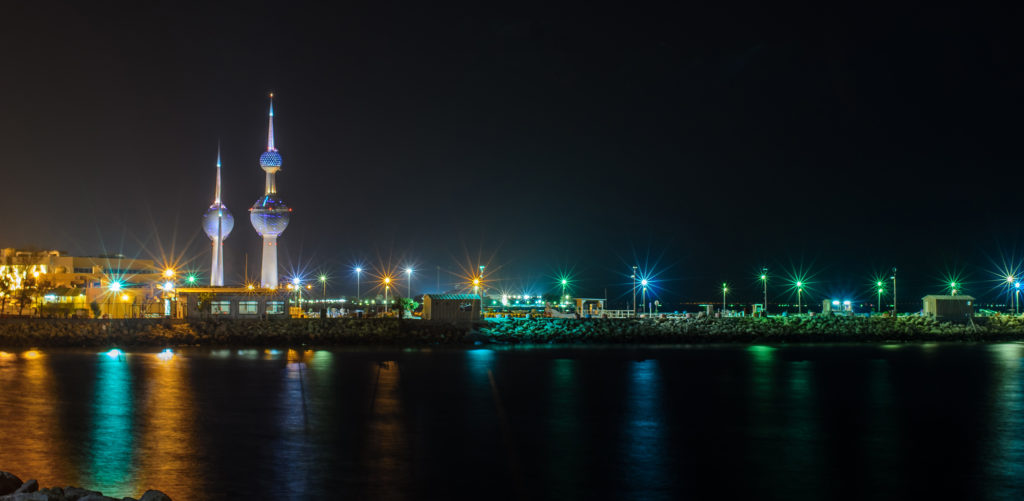Kuwait is one the smallest countries in the Middle East, but also one of the most oil-rich. The country spans an area of just under 7,000 square miles with a population of about 3 million.
The country’s robust oil reserves have provided it with a high global ranking in terms of per-capita wealth. Much of this money is being directed towards elaborate residential development, often in the form of large, city-sized projects. Here are two of Kuwait’s most ambitious city endeavors.

Image by Jaafar Alnasser
-
Sabah Al Ahmad Sea City
Expected to eventually house a quarter of a million people, the Sabah Al Ahmad Sea City is an in-progress residential project on the coast in the southeast corner of Kuwait.
The Sea City is the brainchild of late property developer Khalid Yousef Al Marzouq, who came up with the idea for a vibrant city located in the depths of the desert. Al Marzouq’s plan was delayed by the Gulf War. It wasn’t until 2003 that the visionary’s son, Fawaz al Marzouq, was able to break ground on the project via La’ala Real Estate, his father’s property development firm.
Fawaz al Marzouq chose to name the Sea City after the emir of Kuwait, Sheikh Sabah Al Ahmad, who inaugurated the city at the end of 2009.
A City Rises from a Salt Marsh
The site for the Sea City was originally a salt marsh. This is significant from a green building perspective because this area was essentially unusable prior to development. Unlike a greenfield, a salt marsh can’t be used to plant crops or feed livestock, so repurposing this space for residential use is a very ecological decision.
To prepare this harsh environment for building, an area about the size of New York’s Manhattan borough was drained and compacted.
Tons of sand were moved to carve an intricate channeling system much like that of the Palm Islands in Dubai, bringing Persian Gulf seawater almost six miles inland. The channels have created over 120 miles of beaches for future residents.
Equipment and Labor
The enormity of the project required a huge array of equipment, including almost 30 bulldozers, more than 65 excavators, and more than 100 dump trucks. The construction team consisted of approximately 2,500 people. The majority of the workers hail from India, but more than 20 countries were represented in the labor force.
Because of the challenging climate in Kuwait, much of the work was completed at night during the summer months to prevent the workers from suffering in the heat of the day.
More than 700 football fields’ worth of heat-resistant asphalt has been laid in the city as well as almost 750 miles of cable. Additionally, 17 water desalination towers will provide the city with drinking water. The city will also be outfitted with power and telecommunications infrastructure to provide electricity and internet to all residences in the area.
Green Efforts
In addition to choosing a salt marsh as the site for the Sea City, La’ala Real Estate has made efforts to maintain and protect the natural marine environment. Scientists have consistently monitored the health and population of marine life. Mangroves and other hearty saltwater plants have been established on the shores of the Sea City to encourage the longevity of this ecologically important population.
-
Madinat al-Hareer Silk City
In 2008, the Kuwaiti government announced that it would invest over $130 billion in an elaborate development project called the Silk City.
The site for the Silk City is a desert plot that covers over 60,000 acres. The city will be just across the bay from the country’s capital, Kuwait City. A 14-mile bridge called the Jaber Al Ahmed Bridge will cross the bay, connecting the Silk City to the capital. This will reduce driving time between the two locations from over an hour to less than 20 minutes.
Architectural designs for the Silk City have been created by a firm in London. The city will feature about 700,000 residences, a national park and wildlife reserve, an international airport, a sports complex, and a mega mall, all centered around a 3,284-foot skyscraper called the Burj Mubarak al-Kabir.
The World’s Tallest Skyscraper
The height of the Mubarak will be 1,001 meters – a nod to One Thousand and One Arabian Nights, a series of ancient stories from Islamic culture. The skyscraper, intended to be the tallest building in the world upon completion, will be the most iconic feature in the Silk City.
The Mubarak will actually be a combination of three intertwined towers. These structures will fit together to create a series of seven 30-story communities linked by town squares. Construction of the skyscraper accounts for more than $7 billion of the total budget.
Silk City Districts
Three individual, themed districts will make up the Silk City. One will be devoted to business, while the other two will be devoted to leisure and culture. It’s estimated that the city will be home to almost half a million new jobs for Kuwaiti citizens.
The Silk City is scheduled to be complete in 2023.
